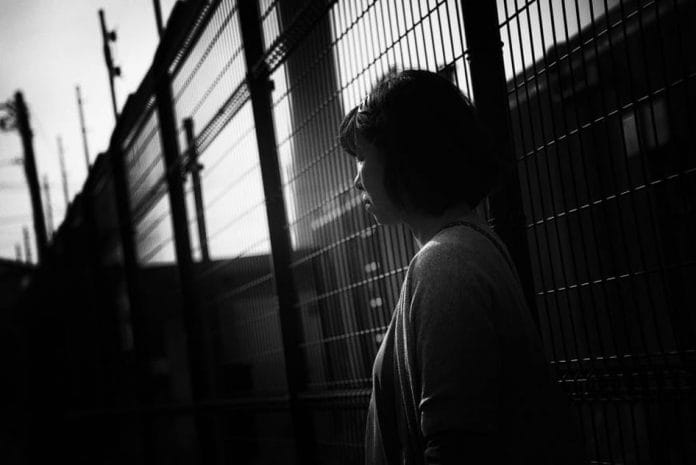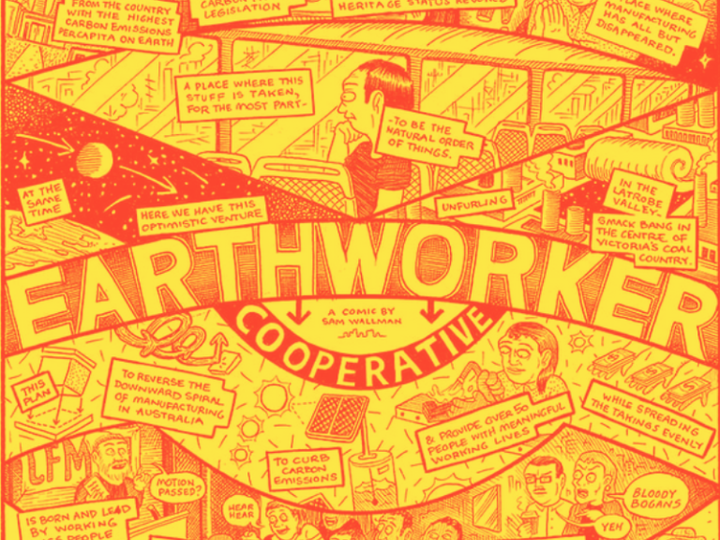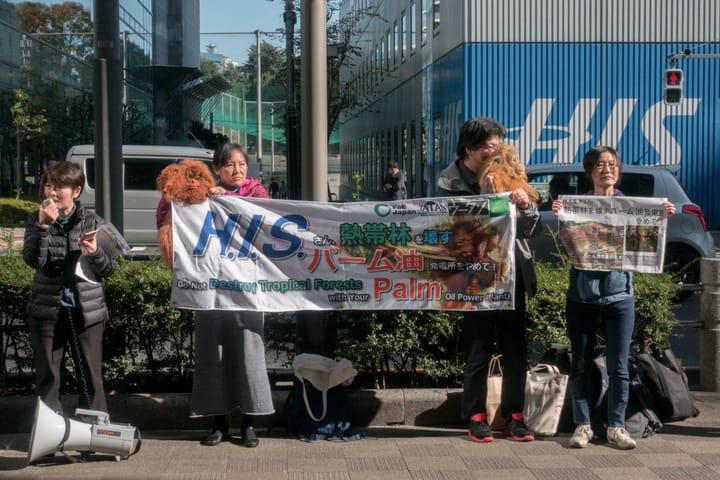Japan's women continue to suffer at hands of domestic violence

National campaign seeks to end violence against women
There’s an almost dispassionate matter-of-factness in the way Risa Tanaka describes how she was tortured by her husband. One of the methods he favored, she says, was to act as a police interrogator, asking senseless questions and, if he didn’t like the answers, ramming the open end of an empty wine bottle into the side of her head.
“He would do it right here,” she says, pointing to her temples, which are covered by her thick hair, dyed and arranged for an extra layer of disguise. “Sometimes it would go on for an hour or more. Words cannot describe the pain.” For more than seven years, Tanaka says she was virtually a prisoner. She was repeatedly kicked, beaten, drugged and, once unconscious, raped.
Complaints to the police made little difference.
Complaints to the police made little difference. At the time shortcomings in Japan’s anti-domestic violence law meant local law enforcers didn’t have the authority to interfere, she says. “They said they couldn’t get involved with such domestic issues,” she says. “Without solid evidence their hands were tied.” The bruises, broken bones and scars — even the cocktail of drugs her husband stashed under the kitchen sink and in the fridge — meant nothing, she says, revealing white oval pockmarks on her legs that for years served as her husband’s makeshift ashtray.
After all, they could have come from anywhere, they told her in an almost accusatory manner. An extreme fear of exacerbating her husband’s sadistic tendencies made her reluctant to search too deeply for help — help that even those she believed were duty-bound to provide couldn’t, or wouldn’t. “(The violence) could be sparked by the silliest things — for not peeling the soybeans, or waking him up a little too early, or a little too late” says Tanaka, who is now 40. “It was drilled into me that I had brought it all on myself, that I was in the wrong and he was the victim.”
Tanaka’s case reflects a not unfamiliar cyclical and intergenerational pattern that often afflicts abuse victims, but is nonetheless horrific. As a child she was physically and sexually abused by her father, who left home when she was 14. Then, with mounting debts, her mother tried several times to commit suicide, but unable to do so, found another way to escape her poverty, forcing Tanaka into prostitution when she was barely 16. In her private life she went from one abusive relationship to another, culminating in the “monster” that was her husband, whose initial gentleness had seemed like an oasis in a loveless desert.
Later, she discovered that he, too, had been abused as a child. “I didn’t know at the time but looking back, my barometer was not degrees of good, but degrees of abuse,” says Tanaka, who kept a journal cataloging her abuses, which included being doused in a freezing bath during winter and financial privations that included a daily ¥200 stipend. “It was all I knew.”
“It was all I knew.”
Tanaka has since escaped. She changed her name by deed poll and moved, taking their 4-year-old daughter, who she says was a product of another alcohol- and drug-fueled assault. Mother and daughter now live in a modest apartment, barely surviving off social benefits awarded for the post-traumatic stress disorder (PTSD) suffered by her daughter, who, as a baby, was also abused. Tanaka, who is also undergoing PTSD counseling, was secretly assisted in her getaway by an unexpected source: two sympathetic police officers.
“Perhaps they felt guilty about the shortcomings of the law, or the tendency of their colleagues to turn a blind eye to abusive practices in which they themselves partake,” she says. “Either way, domestic violence is one of those inconvenient truths that the authorities don’t want you to see. No matter how inconvenient, that truth would seem to be reflected in official statistics showing 1 in 4 Japanese women suffered abuse by their spouses in 2015. While that is an improvement on the 1-in-3 result published a year earlier — a figure that more closely approximates to the World Health Organization’s estimated global average (30 percent in 2010), experts and victims believe that even the older figure does not come close to the real situation in Japan.
Kimio Ito, a professor of sociology at Kyoto University’s graduate school of letters and an author of several books on gender-related issues, says a clearer reflection can be seen in the alarming increase in the instances of domestic violence that were reported to the nation’s police. This stood at 63,141 in 2015, 18 times the figure of 2001, when Japan’s first anti-domestic violence law was enacted, bringing it in line with 125 countries that have ratified similar laws.
A marked jump was seen in 2012, which saw 43,950 cases of abuse reported to police, up 30 percent over 2011 when Japan ameliorated its system for reporting and investigating domestic violence. Nonetheless, domestic violence remains the violent crime least reported to police, even though it accounts for around one-fifth of all violent crimes. Moreover, fewer than 10 percent of reported abuses have resulted in arrests, while deaths of women resulting from domestic violence have continued to rise — estimated in 2015 to be one fatality every three days in Japan, according to the police data. Another major change was seen in 2013, when two such deaths caught the media’s attention and triggered a revision in the existing anti-domestic violence law.
Whereas the pre-revised law protected victims who were spouses, de facto spouses or ex-spouses of the perpetrator, the revision also covered violence committed by partners sharing the same living quarters with the victim. It also allowed victims to file for a restraining order. However, it still did not cover victims of “date domestic violence,” which a 2014 Cabinet Office survey found affects 19.1 of females and 10.6 percent of males. Indeed, experts say the revised law is still far from perfect. When the amendment took effect in January 2014, any victims of domestic violence who are not spouses, de facto spouses or ex-spouses are now entitled to obtain assistance from publicly run domestic violence support centers, centers that were originally opened to shelter prostitutes as part of the still controversial 1958 anti-prostitution law.
Tanaka says another little-known fact about these centers is an unwritten rule that allows victims to shelter there as long as they don’t leave, which is effectively useless for the 10 percent of women who are repeatedly abused.
Another abuse victim, Rin Ayasaki, believes there also is a dire need for wider-reaching “safety nets” for children in Japan, or at the very least a more active acknowledgement by educational and preschool facilities that some of their charges come from less than happy homes. Ayasaki’s four children, who are now aged 15, 10, 9 and 6, were subjected to violence at the hands of her husband and even today, five years after separation, they continue to suffer the consequences.
Three have been diagnosed with Attention Deficit Hyperactivity Disorder, while her eldest daughter is undergoing therapy and medication to treat PTSD. She has flashbacks and recurring nightmares that she is going to be murdered, says Ayasaki, 33. “When we were living together as a family I had no idea she was being abused — I just thought she cried a lot at night,” says Ayasaki, who, along with her older sister, was also abused as a child by her father. “Nobody ever asked if she was OK, or suggested she needed help.”
Ayasaki says her husband’s own experience of physical abuse as a child might have explained his sexually abusive and violent tendencies, even though when they married he had vowed never to follow that path.
“He once told me that the only place he felt safe as a child was the toilet, because it had a lock … but, despite that, he would beat our second son and Iock him in the toilet,” she says. “For me, the definition of domestic violence is not being able to feel at ease when stating an opinion. I realize now that my husband simply didn’t know (what domestic violence was). He desired control, both of me and our children, which goes against that definition.”

At the heart of the overall problem in Japan, experts believe, is a patriarchal society that endorses control over women and children, a throwback to an 1896 law that was a part of a feudal family system that placed women and children under the control of a male head of the household.
Futoshi Taga, who is a professor specializing in gender issues at Kansai University’s Department of Education and Culture, says that part of the problem is Japan’s late arrival on the global gender equality scene. Indeed, the presence of laws pertaining to equality in Japan today rarely reflect societal reality, he says. A pertinent example, he says, is the legal entitlement for married couples to take either the man’s or the woman’s family name, though in reality the man’s family name is taken in more than 95 percent of cases.
“In post-World War II Europe, many countries still had a system whereby women had no choice but to take on a husband’s name and the legal system and the social reality were quite close, which lead to women fighting for equal rights and getting the system changed,” he says. “In post-war Japan, however, a democratic system was suddenly introduced (in 1948), but the actual situation didn’t change with it. … So the system itself is relatively equal, but the social reality is extremely unequal. My feeling is that that is at the heart of the unusual situation that persists today.”
This is particularly true of the domestic violence issue, about which Japan is still some way behind, he says.
“I think even now there are many Japanese men who think domestic violence is not a problem in Japan, that it’s something that happens exclusively overseas,” he says.
In an attempt to change those perceptions, Taga recently spearheaded the establishment of the Japan chapter of the White Ribbon Campaign, a men’s global movement that began in Canada in 1991 with the objective of ending male violence against women. To mark its official inauguration, White Ribbon Campaign Japan held a symposium in Tokyo on May 1, during which it publicly announced its “Be Fair Men” declaration.
A notable attendee was Canadian academic Michael Kaufman, who was one of the original founders of the White Ribbon Campaign, which today has a presence in around 80 countries worldwide. “We are making huge progress because women around the world have said ‘no’ to violence and unequal pay and ‘yes’ to equality in the workforce and equality being an assumed fact of life,” says Kaufman, 64, who started the White Ribbon Campaign after a shooting incident at Montreal’s Ecole Polytechnique in 1989, which left 14 women dead, gunned down by a 25-year-old man shouting anti-feminism slogans.
“There are institutions and biases that get in the way — male-dominated parliaments and businesses, and so on, that still define social priorities,” Kaufman says. “So there’s still a way to go but, considering our male-dominated society probably started 8,000 years ago, we have made huge strides over the past couple of generations.” Kaufman agrees that like many Asian countries the tradition of patriarchy “is a powerful one,” but Japan presents more than just unique cultural challenges.
“Women’s participation in economic life is so low it means they are more vulnerable because without paid work there is no escape (from an abusive environment),” he says. “There’s a powerful argument for more women in the economy and research has shown significant GDP growth by doing so.” There is also a compelling economic argument for reducing men’s violence, he says. Several studies undertaken to quantify the direct cost of violence against women have shown that tens of billions of dollars per year could be saved in police, court, hospital fees and other costs should such violence cease, Kaufman says. “This does not include nondirect costs — the reduced productivity brought about because a female worker is in fear, or the man who takes leave to attend a court hearing,” he says. “When all that is added up, the total cost is probably doubled.”
Kyoto University’s Ito, who is also a leading member of White Ribbon Campaign Japan, is skeptical of the country’s own brand of so-called “womenomics,” which was proposed by Prime Minister Shinzo Abe last year in an attempt to increase female presence in top business and political positions to 30 percent over the next five years.
“Support for victims of abuse is invaluable but so, too, is support for the perpetrators of such violence”
“(The womenomics campaign) will be fine for women in the higher echelons of society, but not regular women — the ones who are most susceptible to domestic violence,” Ito says. “There is an argument that the current economic situation is forcing many older women to work to supplement paltry pensions, thus denying younger women of an easy baby-sitter that allows those who can’t find spaces at overcrowded day care facilities to work. This might explain why there’s no growth in the labor force of women with children. For womenomics to help these people, a system that also supports these women must be developed.”
Others believe that without concurrent efforts to tackle long-held chauvinistic beliefs, increasing women’s presence in the workplace could inadvertently increase violence. “Violence by men against women is tolerated in Japan, and this is particularly true of sexual violence,” says Hiromi Nakano, whose nongovernment organization Shiawase-namida (Happy Tears) provides support for victims of sexual violence. “The whole of society has become so anesthetized to this that pornographic and other sexual items that many people overseas might find shocking are lined up even on the shelves of convenience stores, and so on, and nobody bats an eyelid.”
Against this backdrop, getting men to understand the definition of domestic violence is one thing, but trying to end all violence against women in Japan will likely take decades, Nakano says. “We have no choice but to believe in people’s strength and will to change, and gradually move forward,” she says.
Domestic violence victims Tanaka and Ayasaki believe organizations such as White Ribbon Campaign Japan hold a crucial key in speeding up that process. “There are no (domestic violence) support groups run by men, and I am almost certain there are no Japanese men who want to be lectured by women on an issue such as domestic violence,” Tanaka says. Ayasaki agrees, adding that many male assaulters such as her husband were themselves victims of abuse and are unable to break free of the cycle of violence simply because they do not know they are doing wrong or, if they do, how to break free.
“Support for victims of abuse is invaluable but so, too, is support for the perpetrators of such violence,” Ayasaki says. “Without prevention and education, that cycle of abuse will just roll on indefinitely.”


